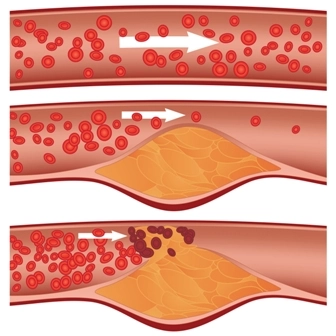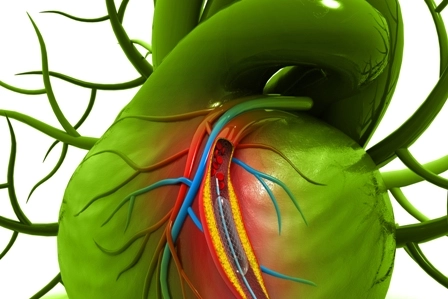Radiology Coding Alert
Follow This Expert Advice To Abrogate Your ICD-10 Anxiety
Training can be the most reliable solution if planned well.
It has now been more than a month since your practice adopted the ICD-10 on October 1st, 2015. You are sure to have faced challenges in this maiden attempt to embrace ICD-10. However, you shouldn’t let this bring down your confidence for diagnosis reporting. You just need to train and retrain until your practice is prepared enough to step into a zone of ease for ICD-10.
Alicia Scott, CPC, CPC-I, CRC, a trainer with Certification Coaching Organization, LLC, in Oceanville, N.J. has had experience turning the potentially grueling task of ICD-10 training into something a lot more palatable and productive. Here are some of her tips for reducing your ICD-10 anxieties.
Get an ICD-10 Expert to Explain the New System
If you haven’t already, your practice should have an ICD-10 expert “come in to talk about their questions. … [To] make sure they see ICD-10 as a good thing for the entire office,” recommends Scott.
She says that once coders and providers learn the new system, they will find “ICD-10 is amazing, and even though there are going to be some bumps, coders are going to fall in love with it.”
Rationale: The guidelines in ICD-9 and ICD-10 logic are the same or at least very similar for the most part. ICD-10 is just far more specific. This specificity benefits coders and providers — once they overcome the security of the old set and the obvious learning curve.
During her talks with medical coders and providers on the ICD-10 switch, Scott offers this analogy: “ICD-9 is like learning to drive your grandfather’s old five-speed pickup truck on the analogy, and ICD-10 is like driving a Cadillac. The guesswork is gone; it is all spelled out for you now,” she says.
The rub, however, is getting everyone the supplies and training they need to deal with the first year of ICD-10.
Example: ICD-10 offers more specific choices for carotid artery stenosis. The ICD-9 code 433.10 (Occlusion and stenosis of carotid artery without cerebral infarction) expands to different code choices under ICD-10. That’s because the new code set accounts for whether the stenosis is in the right, left, unspecified, or bilateral carotid arteries.
If your physician doesn’t specify the side, your direct crosswalk for 433.10 will be I65.29 (Occlusion and stenosis of unspecified carotid artery) under ICD-10.
Given that your physicians provide adequate documentation, you can select from the following codes which map to ICD-9 code 433.10:
Deliver Paper Copies for Coders
The cause for much ICD-10 anxiety, in many cases, is a lack of a paper copy of the ICD-10 manual. Scott recommends purchasing ICD-10 books for the entire coding staff.
“Each of your coders needs an ICD-10 manual to hold onto and make notes,” Scott says.
Further, looking at a paper copy can help alleviate some of the ICD-10 fears, she says. When coders look at the paper copy of ICD-10, they often discover “that codes are found in the ICD-10 manual in the same areas [as the ICD-9 manual]. The chapters didn’t change locations.”
Bottom line: Once coders can hold the book in their hands and take a good physical look at a paper manual, “they will see the benefits” of ICD-10, Scott explains.
Promote Communication with Weekly Practice Sessions
Every ICD-10 coding expert will tell you communication between coders and providers is vital to success with the new system. Creating forums, whether supported internally or from an outside source, for questions, concerns and communication will be beneficial. “Coders have communicated and analyzed the decisions made to assign a specific code, therefore it would be only natural to have that avenue available as everyone becomes accustomed to the new code-set,” says Kelly C. Loya, CPC-I, CHC, CPhT, CRMA, Director of Reimbursement and Advisory Services, Altegra Health, Inc.
Try this: Create an ICD-10 coding practice session, “where [coders and providers] have weekly meetings and go over unique cases with explicit rationales,” Scott recommends. This will give both coders and providers a forum to ask questions and form opinions about important ICD-10 challenges without interruptions.
If providers and coders don’t communicate, “then you are going to suffer with ICD-10,” warns Scott. If not weekly, your practice’s best bet is to set up some kind of regular meeting between providers and coders to go over any ICD-10 challenges they encounter.
Coders should also get involved in the available local coding organization chapters, if they aren’t already. This is a great way to listen, learn, and provide input regarding the real time daily use and questions surrounding ICD-10.
Stoke ICD-10 Interest with Dx Coding ‘Games’
Another way to foster communication between coders and providers is to inject a little fun into ongoing ICD-10 training.
Do anything you can to promote a positive attitude around ICD-10, Scott recommends. “Have fun with it. Have a ‘Crazy ICD-10 code of the week’ … or something else fun.”
Some suggested ICD-10 training activities may include:
ICD-10 “Jeopardy”: Stage a “Jeopardy”-style game show that tests ICD-10 coding knowledge. The winner gets a small prize.
Group Coding: Split up into teams and work on providing ICD-10 codes based on mock encounter forms. The team who gets the most ICD-10 codes right wins a small prize.
Crosswalk Challenge: Give everyone a list of ICD-9 codes and descriptors, and instruct them to convert the codes to an appropriate ICD-10 code using a crosswalk. Give the employee who gets the most codes correct a small prize.

Related Articles
Radiology Coding Alert
- Radiodiagnostics:
Diagnostic Details: Get a Clear Image of Ultrasound Coding to Claim It Right
You may need to code ultrasound more frequently in your office settings. Ultrasonography is a [...] - ICD-10:
Follow This Expert Advice To Abrogate Your ICD-10 Anxiety
Training can be the most reliable solution if planned well. It has now been more [...] - Practice Management:
Facing Challenges For Electronic Health Records? Adopt These Useful Tips
Update, track issues, and do not neglect patient interactions. Electronic health records (EHRs), perceived to [...] - You Be the Coder:
Count on 74712, 74713 for Fetal MRI
Question: What new codes will be available for reporting the procedure of fetal MRI in 2016? [...] - Reader Question:
Explore Seventh Character Possibilities for Fracture Codes
Question: What is the seventh character significance in diagnosis codes for pathologic fracture? Do these differ [...] - Reader Question:
Fluoro is Inclusive in 33202 to 33273
Question: How can we report fluoro with pacemaker insertion? Is there guidance for reporting this service? [...]




